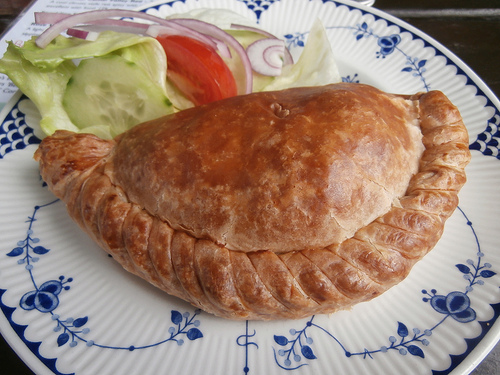Cornish pasty: A fiercely protected national dish
The Cornish pasty is as historic as it is delicious and convenient. The exact origins of the pasty are lost in time, but references to the pasty can be found in literature and historical records dating to the 1200s, including references in The Canterbury Tales and three Shakespeare plays.
The pasty was originally something of a high-class food, with ingredients (like venison) that were expensive at the time. The oldest known recipe for Cornish pasty is dated 1510 and included the cost of the ingredients for this luxury meal.
In the 17th and 18th century, the pasty enjoyed a resurgence among the working class Cornish miners. It was the perfect thing to eat during meal breaks on the job, since it provided an entire filling meal in a convenient hand-held form. The pasties were wrapped in muslin or paper in order to keep the miners' dirty hands from contaminating them as they ate. Traditionally the pasties were eaten from one end to the other, burrito-style, rolling down the paper to expose more of the pastry as you went.
There is no such thing as "the" pasty recipe. There are millions of variations on the theme, and what constitutes a "typical" pasty changes from one century to the next. The most common modern pasty recipe includes beef (usually skirt steak), chunks of turnip and potato, minced onion, and plenty of pepper, on a dense shortcrust pastry. Other common variations are vegetarian pasties (some of which include chunks of stilton cheese), and a pork and apple filling that balances sweet and savory.
The raw ingredients are doled out into the circle of dough, the dense pastry crust is folded and crimped, and the pasty is baked for an hour or more. This gives a beautiful golden crust, while the filling cooks into a sort of thick stew.
Image courtesy Flickr/Metaphorical Platypus
